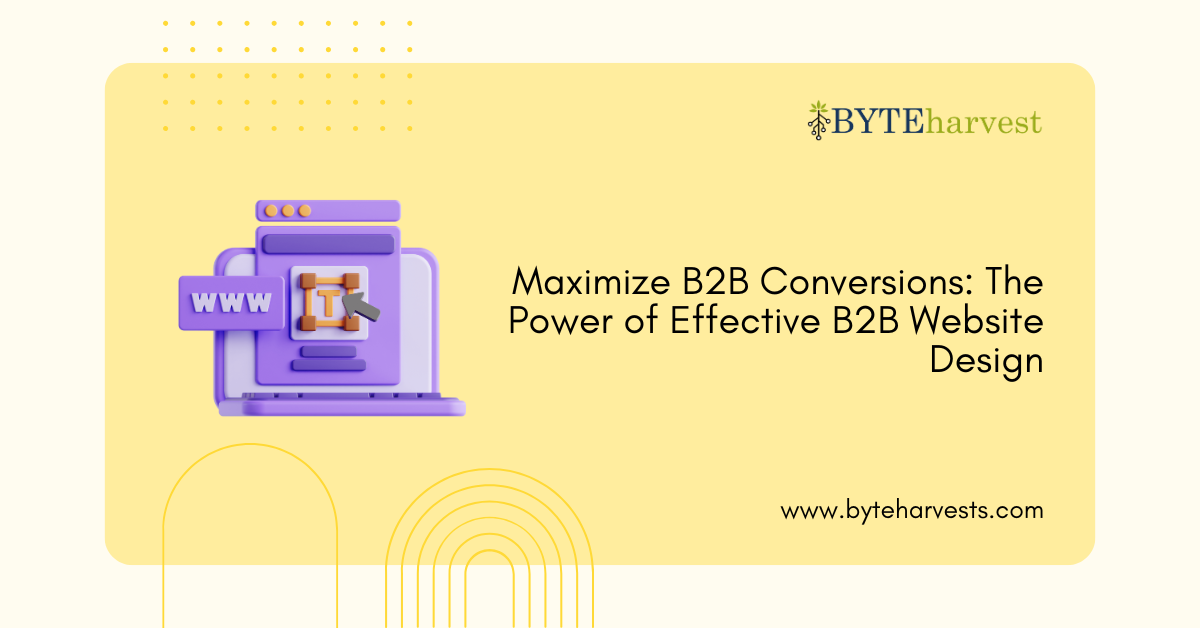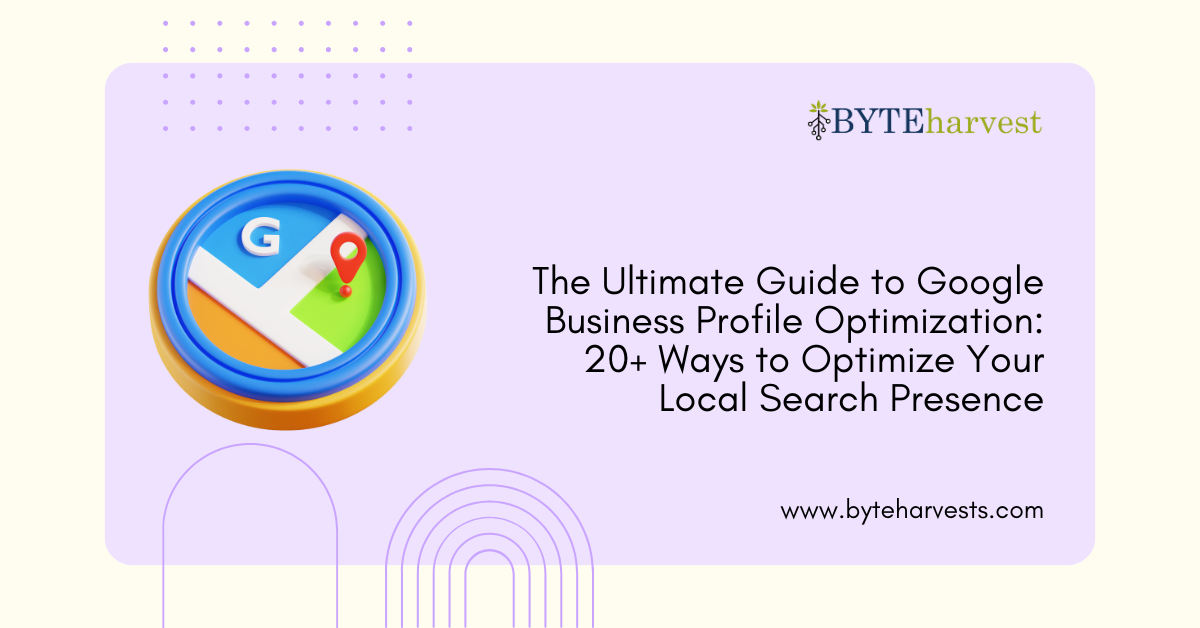Maximize B2B Conversions: The Power of Effective B2B Website Design
Boost Your B2B Conversions with Effective Website Design
In today’s digital age, having a successful B2B website is crucial for boosting conversions and driving business growth. A well-designed B2B website not only attracts potential clients but also converts them into valuable leads. However, designing an effective B2B website involves more than just making it visually appealing; it requires careful consideration of various factors to ensure optimal performance. In this article, we’ll explore the best practices and strategies for designing a B2B website that maximizes conversions and boosts your business.

Outline:
- Understanding B2B Website Design
- Key Elements of Successful B2B Websites
- Optimizing for Conversion: Design Tips
- Enhancing User Experience for B2B Visitors
- Building Trust and Credibility
- Crafting Compelling CTAs
- Optimizing for Search Engines
- Effective Content Marketing Strategies
- Case Studies: Successful B2B Website Designs
- Measuring Success: Analyzing Conversion Rate
Understanding B2B Website Design
Creating a successful B2B website requires a deep understanding of your target audience, their needs, and their behavior. It’s not just about showcasing your products or services; it’s about guiding potential clients through their buying journey. A well-designed B2B website should provide relevant information in a clear and concise manner, making it easy for visitors to find what they’re looking for.
Key Elements of Successful B2B Websites
A successful B2B website integrates several key elements, including:
Effective CTAs: Well-placed and persuasive calls-to-action guide visitors towards conversion.
Clear Navigation: Easy navigation ensures that visitors can quickly find the information they need.
Compelling Value Proposition: Clearly communicate the value your products or services offer to potential clients.
Professional Design: A visually appealing and professional design builds credibility and trust.
Responsive Design: Ensure your website is optimized for various devices to reach a wider audience.
High-Quality Content: Engaging and informative content keeps visitors on your site and encourages them to explore further.
Understanding B2B Website Design
Creating a successful B2B website requires a deep understanding of your target audience, their needs, and their behavior. It’s not just about showcasing your products or services; it’s about guiding potential clients through their buying journey. A well-designed B2B website should provide relevant information in a clear and concise manner, making it easy for visitors to find what they’re looking for.
Key Elements of Successful B2B Websites
A successful B2B website integrates several key elements, including:
- Clear Navigation: Easy navigation ensures that visitors can quickly find the information they need.
- Compelling Value Proposition: Clearly communicate the value your products or services offer to potential clients.
- Professional Design: A visually appealing and professional design builds credibility and trust.
- Responsive Design: Ensure your website is optimized for various devices to reach a wider audience.
- High-Quality Content: Engaging and informative content keeps visitors on your site and encourages them to explore further.
- Effective CTAs: Well-placed and persuasive calls-to-action guide visitors towards conversion.
Optimizing for Conversion: Design Tips
To optimize your B2B website for conversion, consider the following design tips:
- Simplify the Design: Keep the design clean and clutter-free to avoid overwhelming visitors.
- Highlight CTAs: Use contrasting colors and strategic placement to make your CTAs stand out.
- Minimize Friction: Streamline the conversion process by removing unnecessary steps.
- Use Social Proof: Display testimonials, case studies, and client logos to build trust and credibility.
- Personalize the Experience: Tailor content and offers based on the visitor’s industry or interests.
Enhancing User Experience for B2B Visitors
User experience (UX) plays a crucial role in the success of a B2B website. Here are some tips for enhancing UX:
- Optimize Load Times: Ensure fast-loading pages to prevent visitors from bouncing.
- Mobile-Friendly Design: Design with mobile users in mind to accommodate different devices.
- Intuitive Navigation: Make it easy for visitors to find what they’re looking for with clear navigation menus.
- Clear Messaging: Communicate your value proposition and offerings clearly and concisely.
- Interactive Elements: Incorporate interactive features like calculators or quizzes to engage visitors.
Building Trust and Credibility
Building trust is essential for B2B websites. Here’s how you can establish credibility:
- Professional Design: A well-designed website reflects positively on your brand and instills confidence in potential clients.
- Client Testimonials: Showcase testimonials from satisfied clients to demonstrate your track record of success.
- Security Features: Display security badges to assure visitors that their information is safe.
- Transparency: Be transparent about your company, products, and pricing to build trust with potential clients.
Crafting Compelling CTAs
Effective calls-to-action (CTAs) are vital for driving conversions. Consider the following when crafting CTAs:
- Clear and Actionable Language: Use concise and persuasive language to encourage action.
- Placement: Position CTAs strategically where they’re most likely to be noticed.
- A/B Testing: Experiment with different CTAs to see which ones resonate best with your audience.
- Urgency and Scarcity: Create a sense of urgency or scarcity to prompt immediate action.
Optimizing for Search Engines
Optimizing your B2B website for search engines is crucial for increasing visibility and attracting organic traffic. Here’s how:
- Keyword Optimization: Research and incorporate relevant keywords into your website content.
- Meta Tags and Descriptions: Optimize meta tags and descriptions to improve click-through rates.
- Quality Content: Regularly publish high-quality, informative content that provides value to your target audience.
- Backlink Building: Earn backlinks from reputable websites to boost your site’s authority.
Effective Content Marketing Strategies
Content marketing is a powerful tool for attracting and nurturing leads. Consider the following strategies:
- Educational Content: Create content that addresses the pain points and challenges of your target audience.
- Content Distribution: Share your content across various channels, including social media and email newsletters.
- Lead Magnets: Offer valuable resources such as ebooks or whitepapers in exchange for contact information.
- Email Marketing: Nurture leads through targeted email campaigns tailored to their specific interests.
Case Studies: Successful B2B Website Designs
Examining successful B2B website designs can provide valuable insights into what works. Here are a few examples:
- Company A: Increased conversion rates by 30% after redesigning their website with a focus on user experience.
- Company B: Generated $1 million in revenue within six months of launching their new website with compelling CTAs and personalized content.
- Company C: Improved search engine rankings and organic traffic by 50% through a comprehensive SEO strategy.
Measuring Success: Analyzing Conversion Rate
Measuring your B2B website’s success requires analyzing conversion rates and other key metrics. Consider the following:
- Conversion Rate: Track the percentage of visitors who take a desired action, such as filling out a contact form or making a purchase.
- Bounce Rate: Monitor the percentage of visitors who navigate away from your site after viewing only one page.
- Traffic Sources: Analyze where your website traffic is coming from to identify the most effective marketing channels.
- ROI: Calculate the return on investment for your website design and marketing efforts.
Conclusion:
Designing a successful B2B website involves understanding your target audience, optimizing for conversion, and building trust and credibility. By implementing the best practices and strategies outlined in this article, you can create a B2B website that not only attracts potential clients but also converts them into valuable leads. Remember to continuously analyze and optimize your website to ensure sustained growth and success.






